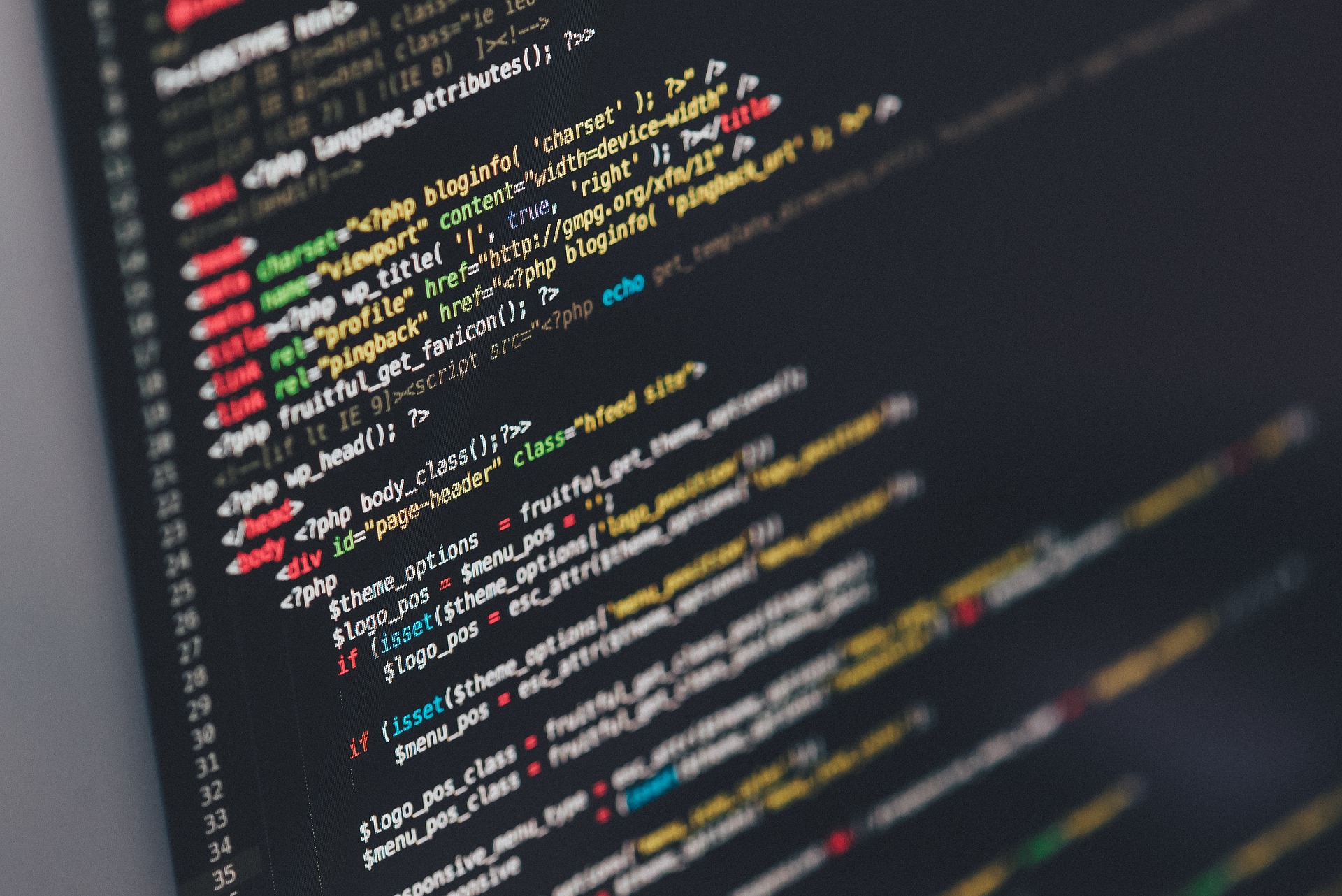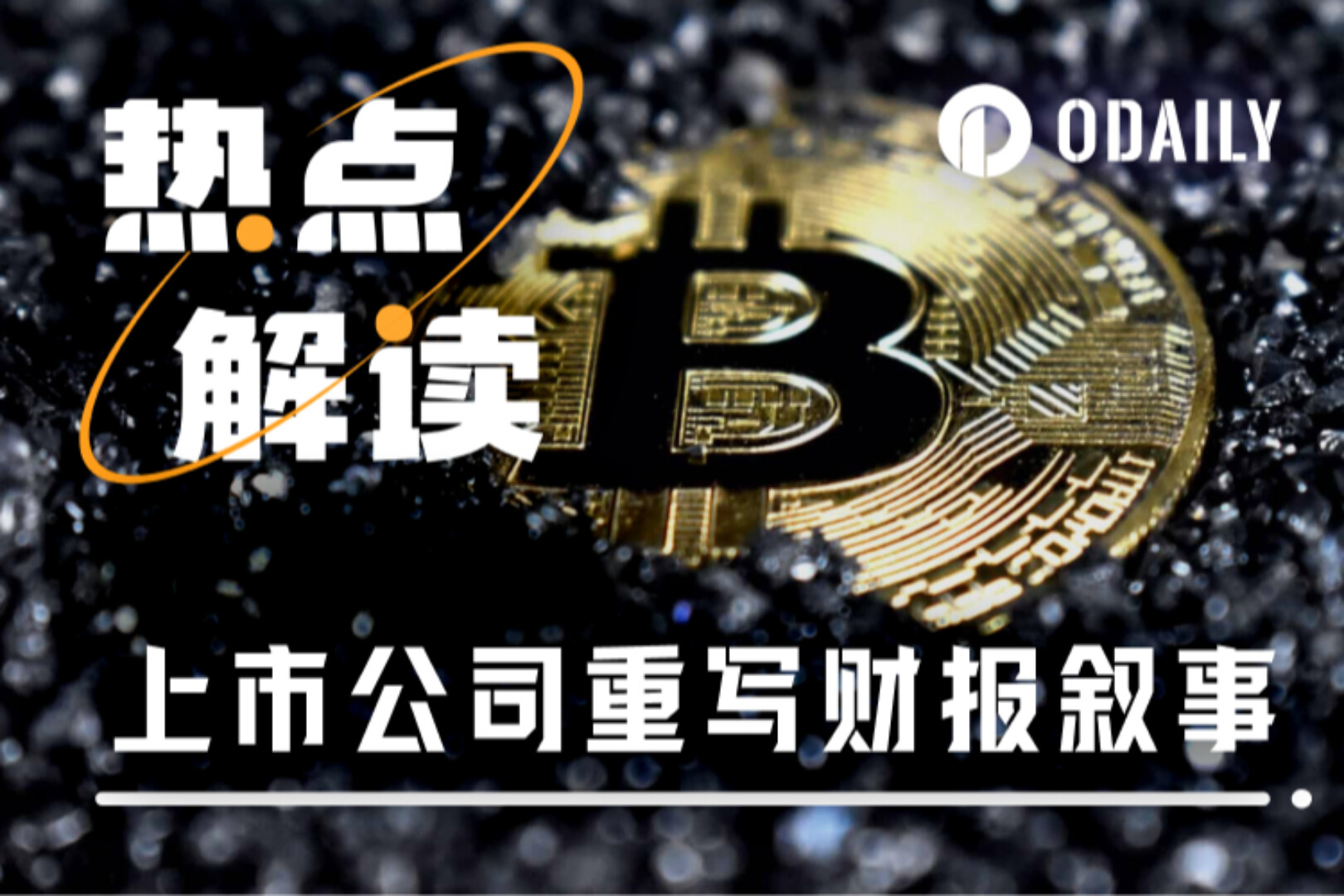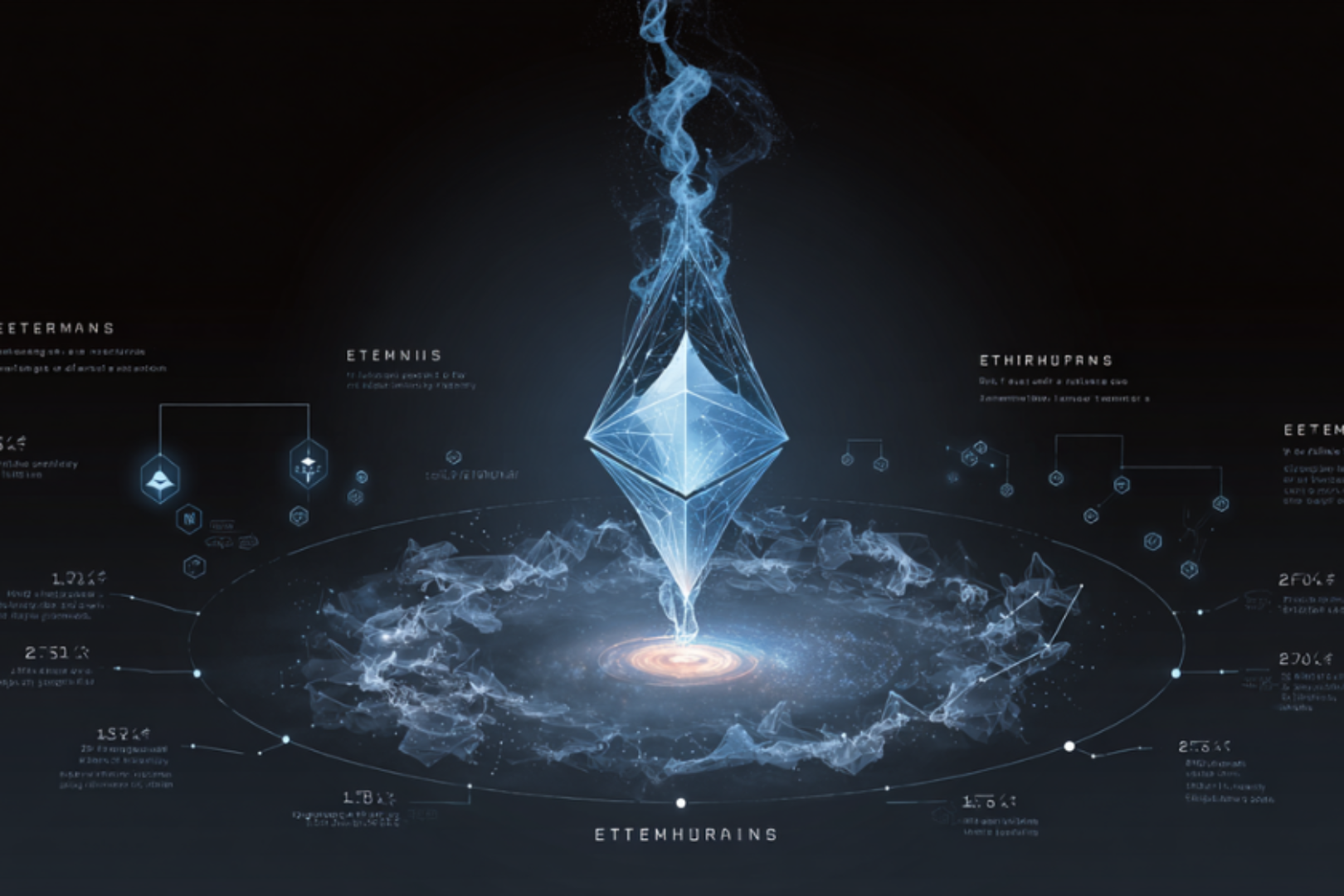

On November 28, the 2018 POD New BlockTrend Blockchain Summit, co-hosted by Odaily and 36Kr Group, was held in Beijing. At the meeting, Liu Xiaolei, Guanghua School of Management, Peking University delivered a keynote speech on "Blockchain and Digital Economy". She believes that in the past, the equity financing centered on Hong Kong finance and the financial model with banks as the main body. The future is an era of digital economy.
Liu Xiaolei said that in the past, the growth model of the economy has encountered a bottleneck. In the future, we must either increase productivity, that is, technological progress, or improve the efficiency of resource allocation. However, technology development is a long-term process, and we can expect technologies such as blockchain to improve the efficiency of resource allocation. Liu Xiaolei believes that in this new turning point, data will enter the production process as a new industrial factor, and China still has the advantage of data dividends.
secondary title
The following is the text of the speech:
Liu Xiaolei: First of all, I am very grateful to the organizer for giving me this opportunity to come here to share with you. In fact, I just rushed back from Hong Kong yesterday, because there was a dialogue program on CCTV Finance in Hong Kong yesterday, reviewing the 40-year reform and opening up of finance, especially the financial integration with Hong Kong. So it's very interesting, looking back at the past yesterday and looking forward to the future today.
In my eyes, I think that in the past, it was a financial model of equity financing centered on Hong Kong finance, including banks as the main body. I think in the future we will enter an era of digital economy, or digital China. This is also very clearly reflected in our report to the 19th National Congress of the Communist Party of China. In the past five years, Internet + has achieved great results. In the future, we will enter a stage of digital China.
In this trend, I think blockchain is a very new field, and the entire industry is groping: what business model should be chosen; how should it be promoted? In fact, many papers have been published in our academic circle recently, including myself and the accounting department who also wrote an academic paper. If you are interested, you can pay attention to our official account (gsm_blockchain_lab). There is also a regulatory sandbox for virtual assets that is also thinking about how to regulate this industry, but it is still in the process of learning, so what I am here to share with you is a little bit of my learning experience during the learning process.
Our economy started with a demographic dividend and is now transitioning to a data dividend. This year marks the 40th anniversary of our reform and opening up. We have actually achieved the so-called economic miracle and the Chinese miracle in the past 40 years. The academic circles are all studying why this is so? There are probably two points of consensus: one is investment promotion, and the other is our demographic dividend. But this growth model has encountered bottlenecks, and we are already facing the problems of overcapacity and population aging. What about the future? The 19th National Congress of the Communist Party of China also proposed that we should improve total factor productivity, that is, either technological progress or resource allocation efficiency. Technological progress is easier to understand as a new technology, but when technology cannot improve in the short term, if effective resources are allocated such as Whether bank loans are to state-owned enterprises or private enterprises, and whether to lend to new energy vehicles or hybrid vehicles can also solve the problem.
My point is that our data will enter the generation process as a new factor of production. This is a new feature of the digital economy era. In this new turning point, I think China actually has an advantage, because our country actually has massive data. In such a transitional period, I think our country is in the process of transitioning from the era of demographic dividend to the era of data dividend, so it is still Advantages.
What role does blockchain play in transformation? Data is the crude oil of the AI era. Blockchain can make data an asset. The first condition for data to become an asset is that the data can be confirmed. You have to know who the data is before it can be used as a factor of production. Blockchain has great promise in data authentication.
The second is the digitization of assets. When assets are digitized, they can be easily traded on the blockchain, which helps to effectively allocate resources and guide funds to invest in industries and industries that have a better future. This is also what our national leaders often say to give full play to the effective role of the market in resource allocation. If our assets can be digitized first, and then circulated and priced in the trading market, we can achieve better resource allocation.
However, there are actually many challenges in the process of using data. For example, some big data companies in China have been investigated and dealt with because of illegal data sharing. The blockchain can be shared under the condition of allowing individuals to protect their privacy. For example, the blockchain zero-knowledge proof technology can protect data privacy to a considerable extent.
The previous guests also talked about the opportunities of the blockchain: a very important innovation is the innovation of bookkeeping methods, why is distributed bookkeeping important. One is the process of forming records. What we see in our quarterly and annual reports is actually the result of a period of operation. But the blockchain ledger is not just a result, you can see the entire process of transaction formation. This allows the recording process to be well monitored. Not only in China, but also abroad.
 There is a picture here that is actually the latest foreign data. It uses the data of a certain type of inter-bank transactions between banks in the United States and European banks. We will find it very strange. The vertical line is at the end of the quarter. It is found that European banks and Bank of America do not trade at the end of the quarter. They trade at other times, but Bank of America does not have this trend. Why is this so? Because of the financial crisis in 2008, the United States has strengthened banking supervision, and it requires its bank deposit and loan ratio to meet the standard every day. However, European banks and Japanese banks do not require daily compliance, and quarterly reports are sufficient.
There is a picture here that is actually the latest foreign data. It uses the data of a certain type of inter-bank transactions between banks in the United States and European banks. We will find it very strange. The vertical line is at the end of the quarter. It is found that European banks and Bank of America do not trade at the end of the quarter. They trade at other times, but Bank of America does not have this trend. Why is this so? Because of the financial crisis in 2008, the United States has strengthened banking supervision, and it requires its bank deposit and loan ratio to meet the standard every day. However, European banks and Japanese banks do not require daily compliance, and quarterly reports are sufficient.
When you reach the standard every day, you will be obedient every day. When it is required to meet the standard every quarter, the bank will only meet the standard at the end of the quarter, and the rest will be leased to the market for trading. In other words, when we only need to see a result, there will be a lot of manipulation in the middle of it, so in fact I think it is often said that the blockchain should embrace supervision, and one of my views is that supervision should actually embrace the blockchain. Blockchain, because blockchain is actually promising in regulatory technology. If supervision can see the process of many of our current transactions, it will be beneficial to supervision, and supervision should actually embrace the blockchain.
We are also co-writing a regulatory technology report with the regulatory authorities recently, studying how the regulators can use blockchain technology to better regulate our current new technologies. Another advantage of the public ledger is that when multiple parties are together, information distribution will be very easy.
There is also the issue of the confirmation of rights in the blockchain, which is the issue of asset digitization. After assets are digitized, it is conducive to the statistics, pricing, and circulation of assets. The current Internet of Things and the development of smart hardware make it very possible to use mobile phones to upload data to the chain.
We went to Qingdao to visit a tire company founded by Peking University alumni. At that time, I was very surprised that the tires could collect data built-in, but in fact the price is already very cheap, that is, smart hardware data collection technology makes this possible.
The third is that I personally think that the biggest innovation of the blockchain lies in the new organizational model. We often discuss, is Alibaba a Chinese company? It is said that China's Internet is very powerful, so do you say that Alibaba is a Chinese company? The VC and PE that invested in the early stage were not Chinese funds. Now it is listed in the United States, and the vast majority of shareholders are not Chinese. How can you say that Alibaba is a Chinese company? Indeed, if we look at it from the perspective of shareholders, it is indeed not the majority of people in China who are shareholders. But from the perspective of the participants, Ali employees, Taobao store owners, and people who buy things on Taobao, including taxpayers, are all Chinese. That is to say, if we look at it from the perspective of the participants, it is indeed a Chinese company. . But in the structure of a limited liability company like Ali, the participants are not shareholders, so the money you buy in Ali is not yours, and it has nothing to do with you. In fact, the more you buy, the more he earns, and the Taobao shopkeeper also pays Ali a lot of money.
What is the new model of the blockchain? It allows the participants of this project, or the participants of this community to also be the owners of this community. Domestic projects are not mentioned. For example, foreign projects are stored on shared hard disks. The space on your hard disk or you store this hardware in other hard disks. I am a participant in this project and I am also the owner of the project. If This project has Token, and the rise in the value of Token in the future will bring me benefits, so in such a blockchain community, its participants are also the owners of this project. This is actually a brand new organizational model, no longer a past company.

Why does the company have this problem? We have a lot of theoretical research, and we have countless academic researches on the organizational model of the company, how the company invests, how the company finances, how the company supervises, and what kind of entrustment the company has. Agency, for a limited company and listed companies, is the same model. The company's goal is to maximize the company's value, it wants to make money, and it wants to make money for shareholders. This is its main purpose. Anything that deviates from this purpose, we call it the principal-agent problem, is wrong, and any deviation from this purpose is wrong.
But from the perspective of the blockchain community, the community should not aim to make money because it does not have a main body. What are the community goals? In a closed-door discussion, an industry friend asked me, what do you think this community should be for? I personally think a community is like a country, what do you think a country is for? Obviously making money shouldn't be the goal of the state, right? Although it is said that we have to collect taxes, tax collection should not be the ultimate goal of the country, because tax revenues are raised and then spent again, through transfer payments. What should be the goals of the country? The goal of a state should be to maximize the interests of each of its citizens. This should also be the goal of the blockchain community. I want to make my community bigger and stronger, not to make money. Of course, making money may also be part of the process.
If we compare it from the perspective of the blockchain community and the country, a centralized organization is a dictatorship or an autocratic country. We directly understand the Bitcoin POW mechanism as direct democracy, and its advantage is that it is very democratic. Its disadvantage is that the efficiency is very low. We all know that Bitcoin expands, but its efficiency may not be high. The consensus mechanism of POS is that the rich are getting richer, while DPOS is the rule of the elite. Because it is too inefficient if everyone governs. But everyone also criticized that this model is easy to monopolize, and the elite itself has some problems of its own.
This is a case of confirming the rights of Baidu photos, and the key to confirming the rights is whether the court will recognize it. But what is gratifying is that our Hangzhou Internet Court has a case, which is a security network made by Guanghua students and their company. The evidence stored in the blockchain was recognized by the Internet court, and our Supreme Court further confirmed the case of the Internet court in September. This is actually a judicial confirmation. For our entire blockchain Industry development is a positive effect.
Regarding the digitization of assets, I feel that it is not as easy as imagined. Because there are different chaining methods in different industries, I have seen many agricultural traceability projects and feel that they are quite unreliable. Because it is not so easy to connect online and offline. For example, in the traceability of agricultural products, you can’t go to the place of origin to trace the source, because the cost is too high, and you can’t put a chip on every kiwi. Therefore, most of them choose to trace the source at the place of distribution, that is, to carry out chaining in the agricultural wholesale market. I think that each industry has its own unique physical chaining method, and different industries need people from different fields to explore what kind of model is better.
Everyone knows that the blockchain + invoice made by Tencent is a general ticket. I think the contribution of the general ticket is not very large. The larger blockchain application in the future is actually value-added tax. I need to record the whole process of circulation.

This is the example of Fcoin, and it is clear to everyone that this example is not as good as originally imagined. I think the mechanism setting of the community Token is a key, and some teachers and colleagues in our academic circle have done some exploration and academic articles in this regard.
When the time is up, stop talking. I think the prospect of the blockchain is very broad, but the current technology cannot carry the lofty vision. Now it is like discussing mobile phone navigation in the early 1990s. In fact, technology at that time could not carry this vision. Of course, with the development and progress of technology, that day will come, and we have reached this day now. However, I personally understand that the technology of the current blockchain is not so mature, so many of our current applications are still relatively far away. In the short term, I think it may still focus on the development of alliance chains, including the national environment. Regarding our academic environment, we are also very interested in exploring a better application and combination with you in the combination of industry, education and research in this field. A few days ago,we actually did a "Blockchain@北大光华" training for the first period, including inviting some big names and guests from the industry to communicate and discuss. I think this industry needs everyone to promote it together. We will do it in April next year For the second phase, everyone is welcome to pay attention to our public account Guangzhou Blockchain Lab (gsm_blockchain_lab) and our future training projects. I will share it with you today, thank you all.




